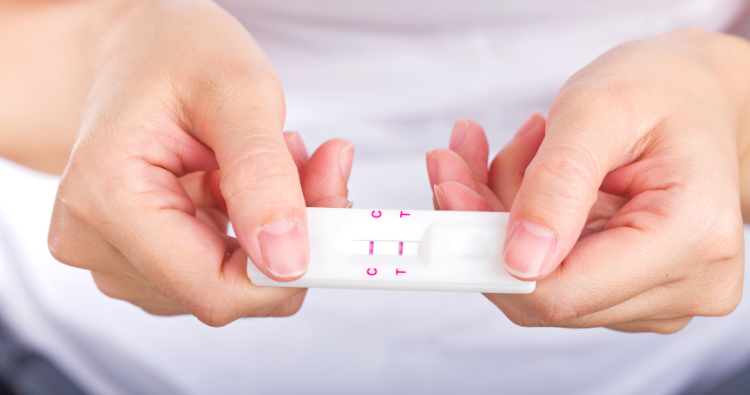

15 July, 2024
It's important to understand female fertility, especially for individuals who wish to become parents. To assess their fertility status, women can do a variety of at-home tests. These tests enable women to monitor their fertility in the comfort of their own homes.
They are simple to use, private, and convenient. These tests provide insightful information about a woman's reproductive health by potentially identifying problems with her fertility early on. Timely medical care following early identification can improve the likelihood of a successful pregnancy.
While home fertility tests provide useful information, they also allow women to take control of their reproductive health. These tests help track hormone levels and ovulation patterns. Both are important for understanding fertility.
Home fertility test kits are simple and effective ways to determine fertility. They measure hormone levels in urine, including estrogen and luteinizing hormone (LH). Both hormones are important for ovulation.
These kits detect hormonal surges that indicate ovulation, allowing women to pinpoint their most fertile days. Women who track ovulation gain a better grasp of their menstrual cycle and reproductive health.
These kits are easy to use and give quick results, making them an excellent alternative for those starting their fertility journey at home.
Blood tests can be performed at home using specialized kits. These tests assess hormone levels that influence fertility, such as follicle-stimulating hormone (FSH) and anti-Müllerian hormone (AMH).
FSH levels aid in determining ovarian reserve, which indicates how many eggs a woman has left. High FSH levels may indicate limited fertility. AMH provides additional information on the remaining egg count, which helps forecast ovarian response to reproductive treatments.
These tests are straightforward, trustworthy, and provide valuable information on a woman's reproductive health, allowing for more informed fertility planning and decision-making.
Simple urine tests called Ovulation Predictor Kits (OPKs) can identify the rise in luteinizing hormone (LH) that precedes ovulation. Usually, this peak occurs 24 to 36 hours before the release of an egg.
An OPK that comes back positive helps women determine when is the optimal time to conceive by highlighting the most fertile days. Using OPKs on a regular basis can assist in monitoring ovulation trends and determining the menstrual cycle's time.
OPKs provide important information about fertility health by identifying ovulation, which makes them a helpful family planning tool.
Your basal body temperature (BBT) is your lowest temperature throughout a 24-hour period. It refers to your body's temperature during rest.
If you're trying to get pregnant, you can use your basal body temperature to predict when you'll ovulate and which days are optimal for sexual relations (or being inseminated). To improve accuracy, track your BBT while also monitoring changes in your cervical mucus.
It's worth noting that your most fertile phase occurs two to three days before the increase in BBT. So, if you notice a temperature fluctuation, your best chance of becoming pregnant has probably already passed.
Your BBT chart can show if you’re pregnant. If your basal body temperature stays high longer than usual after ovulation, it may indicate pregnancy. Missing a period is another sign, and this would be a good time to take a pregnancy test.
Fertility can be assessed by looking at cervical mucus. Ovulation is approaching when fertile mucus becomes clear, soft, and resembles egg whites.
The menstrual cycle can be detected by observing variations in mucus consistency and color, which can assist determine when the cycle will be most fertile. A simple, reliable method of tracking fertility and increasing the likelihood of pregnancy is to monitor cervical mucus.
Tracking menstrual cycles is critical for understanding fertility. Regular cycles, which last between 21 and 35 days, indicate a healthy reproductive system. Irregular cycles can suggest fertility concerns, such as hormone abnormalities or ovulation problems.
Women can better predict ovulation by documenting the beginning and conclusion of each cycle. This information aids in conception planning and the early detection of any potential reproductive issues.
The pituitary gland regulates hormones that influence fertility. Pituitary gland disorders can be identified by at-home testing and symptom tracking. Symptoms can include irregular cycles or changes in ovulation patterns.
Look for signs of female infertility to address the problem early. These indicators include abnormal menstrual cycles, pain during intercourse, and hormone imbalances such as unexplained weight gain or hair loss.
Other symptoms could include very heavy or mild menstrual bleeding, as well as chronic pelvic pain. Recognizing these symptoms early allows for earlier diagnosis and therapy, boosting the likelihood of a successful conception.
Understanding and resolving these symptoms with a healthcare physician can help you find a more direct road to fertility.
In addition to these tests, it's critical to know the more factors that may impact fertility. Issues with the fallopian tubes can make it hard for sperm to reach the egg, preventing fertilization. Both couples should also be aware of the sperm count, since low sperm counts can sometimes lead to problems with conception.
Tracking sex hormone levels like testosterone and estrogen is important to understand overall reproductive health. When doing fertility tests, it’s important to consider hormones, body structure, and lifestyle factors to get a complete understanding.
Home fertility testing are an excellent first step. They provide useful information on ovulation, hormone levels, and overall reproductive health. Early discovery of reproductive difficulties improves treatment outcomes. Always seek complete testing and advice from a fertility specialist.
